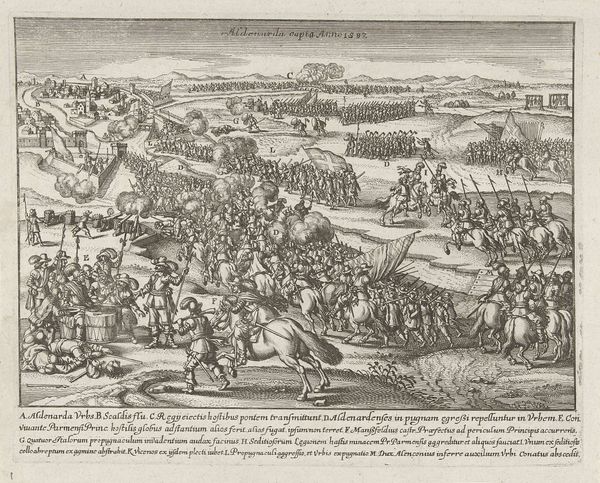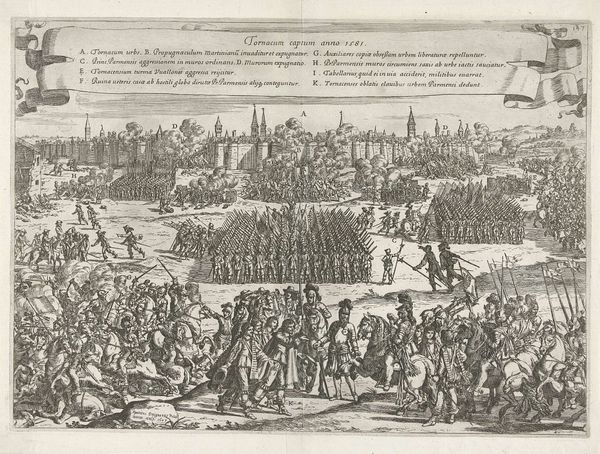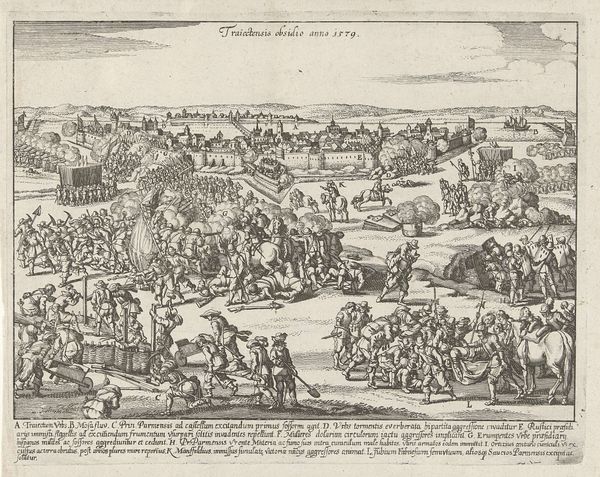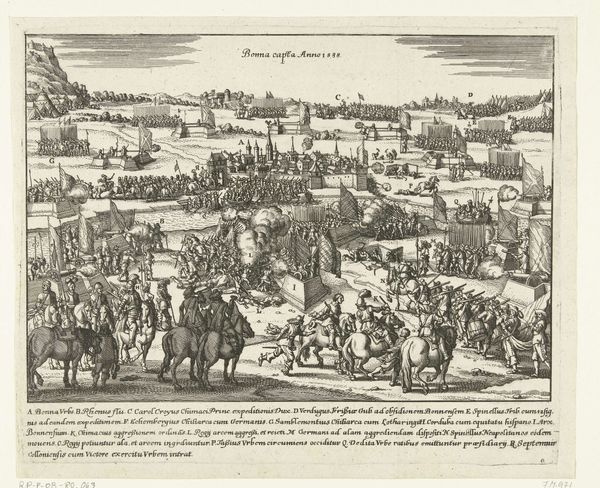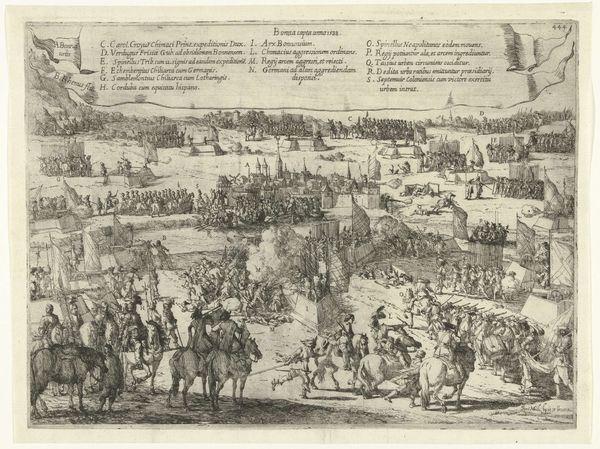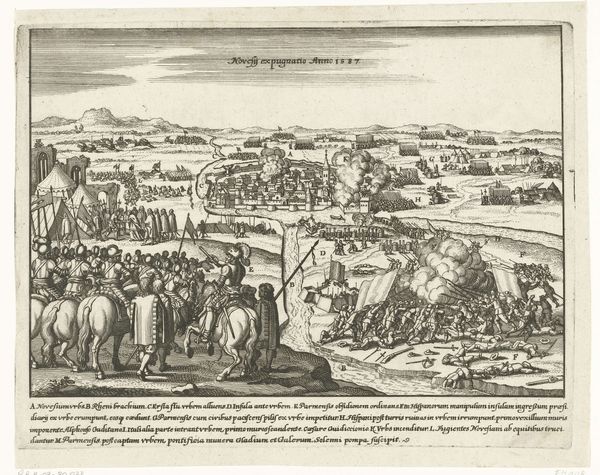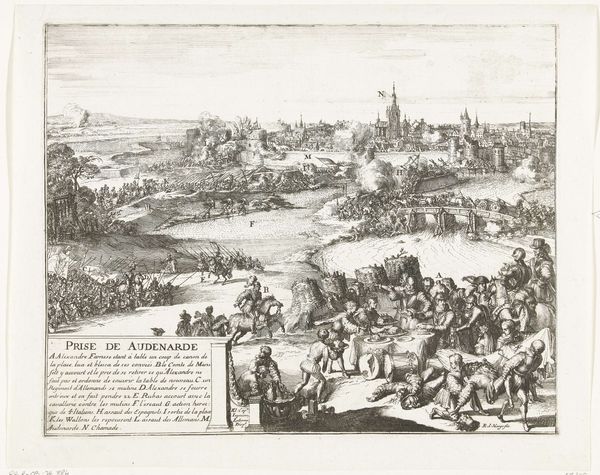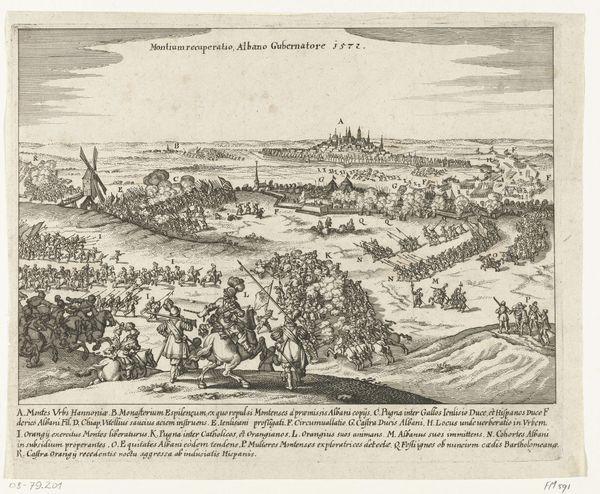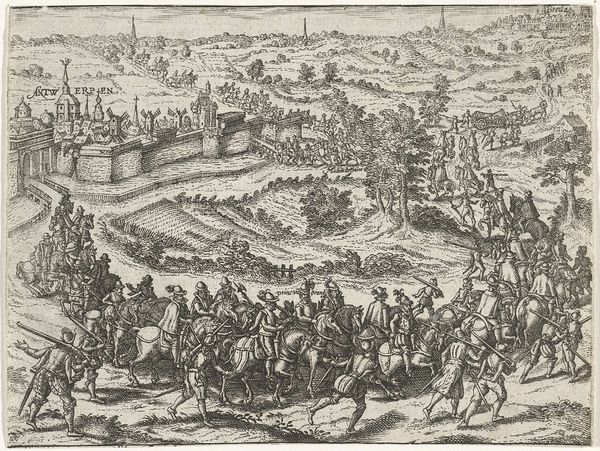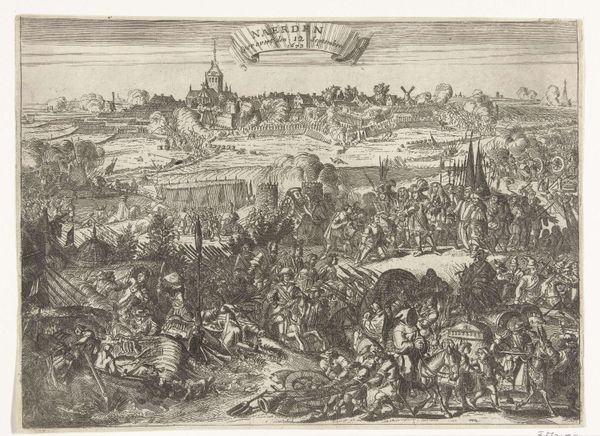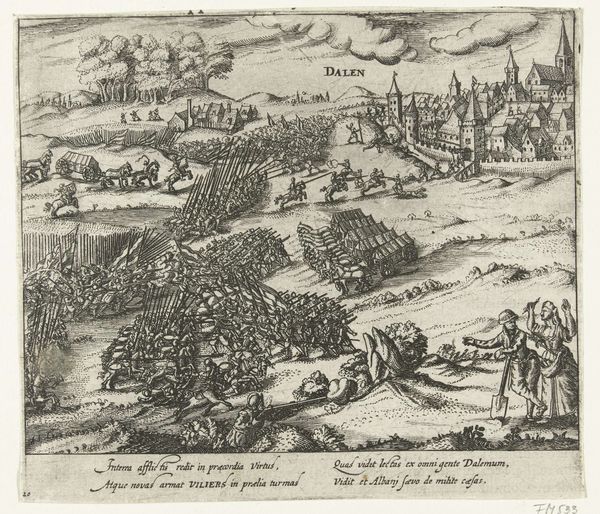
print, engraving
#
baroque
# print
#
cityscape
#
history-painting
#
engraving
Dimensions: height 216 mm, width 269 mm
Copyright: Rijks Museum: Open Domain
Curator: This intricate engraving, created sometime between 1649 and 1651, depicts the "Conquest of Tournai, 1581." While the artist remains anonymous, the print offers a detailed visual record of this historical event. Editor: My initial impression is chaos—a controlled chaos, meticulously rendered. The composition directs the eye from the smoke-filled siege at the city walls to the crowded foreground, a mass of bodies and horses. It’s quite dramatic, even considering it's a print. Curator: Indeed. And it’s important to consider printmaking in this era as a key mode of disseminating information. Engravings like this weren't just aesthetic objects; they served as visual news reports, shaping public understanding of events such as this conquest. Who commissioned it, who produced it and distributed it. Those are all interesting questions. Editor: True, though from a formal perspective, observe how the engraver used line variation to create depth and texture. The close hatching in the shadows of the horses creates volume and contrast that with the simple, thin lines that give detail to background. Curator: Furthermore, think about the socio-political context: the artist choosing to depict this particular event. Was it commissioned by a patron celebrating a victory, or perhaps by someone keen on reminding others about past conflicts? Who this print represents is also very important. It’s about controlling narratives. Editor: Right, I hadn’t thought of it like that before. And visually, it's a clear attempt to create a coherent narrative—observe the numbered annotations and the corresponding descriptions at the bottom. They function almost like captions, directing the viewer's interpretation. Curator: Exactly. Each numbered element—from the breaching of the walls to the mustering of troops—becomes a point of focus. It’s a meticulously crafted piece of propaganda using mass media technology to further certain ideas around warfare, legitimacy, and power. Editor: In closing, looking beyond the strict art-historical framing of this piece is also an avenue to more information—understanding the history surrounding the artist, even with this small print, it has some stories to tell. Curator: Absolutely, it’s in studying what that labor and craft produces where new narratives come forth. Thanks for sharing your take on this piece!
Comments
No comments
Be the first to comment and join the conversation on the ultimate creative platform.
